Determining the fair market value of real estate is a complex process that requires careful analysis by experienced professionals. While homeowners and investors want the highest value for their property, accurate appraisals are essential for fair real estate transactions. This guide provides a deep dive into property valuation concepts, methods, and best practices.
Why Accurate Property Valuation Matters
For most people, real estate valuation helps determine a fair asking or purchase price for a property. However, estimating property value serves many important purposes:
- Mortgage Lending – Lenders need appraisals to ensure loans are secured by property that is worth enough to cover the debt if the borrower defaults.
- Property Sales – Sellers depend on appraisals to set a competitive but profitable list price. Buyers use them to make fair offers.
- Investment Analysis – Investors analyze appraisals to determine potential returns and assess risk when purchasing income-generating real estate.
- Insurance – Insurers require valuations to issue policies and determine accurate rebuild costs if the property is damaged.
- Taxation – Local tax authorities use assessed property values to levy property taxes. Accurate appraisals ensure owners pay their fair share.
While price is what the seller receives and the buyer pays, an appraisal aims to determine the property’s true market value – what it would sell for under normal conditions. The sales price doesn’t always represent market value, so appraisals play a vital role for all parties in real estate transactions.
Core Valuation Concepts
Professional appraisers estimate value based on detailed analysis of key factors that impact property prices.
Highest and Best Use
A property’s highest and best use is the most probable legal use that maximizes its value. The four criteria are:
- Physically Possible – Does the land and building support it?
- Legally Permissible – Do zoning and regulations allow it?
- Financially Feasible – Can it generate enough income to justify costs?
- Maximally Productive – Does the use maximize value?
For example, a residential lot in a busy commercial area may be worth more if developed into a retail property rather than a house.
Demand
Demand reflects the desire and ability to purchase property based on its ability to satisfy needs and provide benefits. More demand increases value.
Factors influencing demand include:
- Location – Convenience, amenities, transportation, and cachet of the neighborhood.
- Economy – Job growth, wages, lending standards, and interest rates affecting buyers.
- Demographic Trends – Shifts in preferences and housing needs.
- Buyer Motivations – Primary home, vacation/investment property, or speculative purchase.
Utility
A property’s utility refers to its ability to satisfy the needs and wants of potential owners. Curb appeal, livable square footage, layout, and upgrades impact utility.
Scarcity
Scarcity considers the finite supply of land and competing properties on the market. High demand and low inventory increase values.
Factors limiting real estate supply include:
- Land Availability – Lack of empty parcels in desirable areas.
- Development Restrictions – Limitations on density, height, or use due to zoning.
- Construction Costs – High land, material, and labor expenses limiting new projects.
Transferability
Transferability refers to the liquidity of real estate investments—how easily ownership rights transfer between parties. Values are higher for properties with:
- Minimal Transaction Costs – Low commissions, transfer taxes.
- Flexible Financing – Available and affordable mortgage options.
- Standard Documents – Clear titles/deeds and property disclosures.
Appraisal Methods
Appraisers rely on three main approaches to estimate property value:
Sales Comparison Approach
This method analyzes recent sales of comparable properties to value the subject home or land. It is commonly used for valuing single-family homes.
The appraiser selects “comps” with these ideal attributes:
- Located in the same neighborhood
- Similar size, age, condition, and amenities
- Sold in the last 6-12 months
- Verified arm’s length transactions
Sale prices are adjusted up or down to account for differences compared to the subject property. For example, if a comp has an additional bathroom, its price would be adjusted upward. The value estimate falls within the adjusted comp price range.
Pros
- Works well for frequently sold property types
- Reflects recent market activity
Cons
- Limited comps may be available
- Subjective adjustments required
Cost Approach
This method estimates the value of improved properties by determining land value and the current replacement cost of improvements. It is commonly applied to specialty use properties like schools and hospitals.
Steps include:
- Land value via sales comparison
- Replacement cost of buildings through square foot or unit pricing
- Depreciate buildings for age and wear
- Add land + depreciated building values
This approach assumes buyers will pay no more for an existing property than they would to buy land and build new.
Pros
- Works when there are limited sales
- Accounts for depreciation
Cons
- Time consuming detail
- Challenge estimating depreciation
Income Capitalization Approach
This method analyzes a property’s ability to generate rental income and/or net operating income (NOI). It applies to income-producing properties like apartment buildings.
Appraisers determine value either through:
- Direct Capitalization – NOI / capitalization rate
- Discounted Cash Flow Analysis – Present value of projected cash flows
Both methods assess the rate of return investors demand on similar properties. Higher NOI and lower capitalization rates increase valuations.
Pros
- Considers property’s income potential
- Forward-looking analysis
Cons
- Depends on accurate income/expense forecasts
- Limited data on capitalization rates
Selecting the Best Approach
Choosing the most applicable valuation method depends on several factors:
- Property Type – Sales approach fits most homes; income approach values most commercial real estate.
- Available Data – Sales comparisons need recent transactions; income approach relies on financial records.
- Market Conditions – Income projections are less reliable in turbulent economies.
- Intended Use – Mortgage lending often prefers sales approach.
Most appraisals apply multiple approaches and reconcile the values obtained into a final opinion. Weight is given to the method providing the most credible value estimate.
Tips for a Reliable Appraisal
Here are best practices for obtaining a high-quality property valuation:
- Hire a Licensed Appraiser – Ensure they have extensive experience appraising similar properties.
- Provide Full Access – Allow the appraiser to inspect all interior and exterior areas.
- Share Information and Records – Provide floor plans, surveys, leases, operating history, etc.
- Give Ample Time – Rushed appraisals may lack important details.
- Avoid Influencing the Process – Appraisers work independently to determine an unbiased opinion.
- Look for Reasonable Adjustments – Drastic variances vs. comparables may indicate issues.
- Review Assumptions Critically – Do expense estimates and projections seem realistic?
Accurately valuing real estate takes into account many intricacies. A professional appraisal from a reputable licensed appraiser provides homeowners, buyers, sellers, investors, and lenders with confidence in assessing a property’s true market value.



